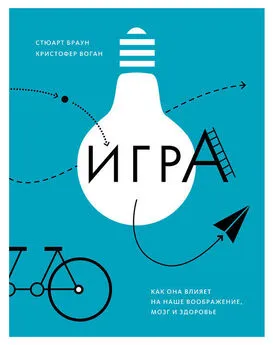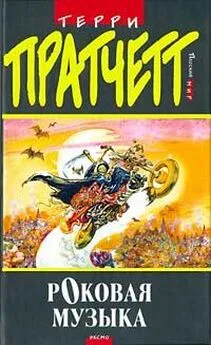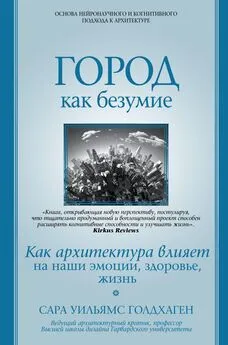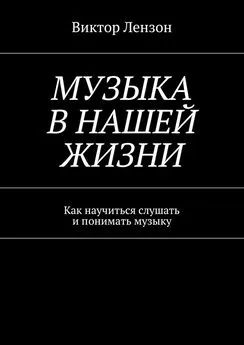Виктория Уильямсон - Мы – это музыка. Как музыка влияет на наш мозг, здоровье и жизнь в целом
- Название:Мы – это музыка. Как музыка влияет на наш мозг, здоровье и жизнь в целом
- Автор:
- Жанр:
- Издательство:Манн, Иванов и Фербер
- Год:2016
- Город:Москва
- ISBN:978-5-00057-660-1
- Рейтинг:
- Избранное:Добавить в избранное
-
Отзывы:
-
Ваша оценка:
Виктория Уильямсон - Мы – это музыка. Как музыка влияет на наш мозг, здоровье и жизнь в целом краткое содержание
Прочтение этой книги, возможно, даст идеи, как правильно применить силу музыки в ваших обстоятельствах.
Эта книга будет интересна в первую очередь тем, кто интересуется влиянием музыки на человеческую психику и физиологию.
На русском языке публикуется впервые.
Мы – это музыка. Как музыка влияет на наш мозг, здоровье и жизнь в целом - читать онлайн бесплатно полную версию (весь текст целиком)
Интервал:
Закладка:
280
http://www.theguardian.com/lifeandstyle/the-running-blog/2013/may/10/haile-gebrselassie-interview.
281
http://www.theaustralian.com.au/arts/music/music-the-fuel-for-performance-overdrive-by-olympic-athletes/story-fn9d2mxu-1226424849410.
282
Gluch, P.D. (1993), ‘The use of music in preparing for sport performance’, Contemporary Thought, 2, 33–53.
283
Jarraya, M., et al. (2012), ‘The effects of music on high-intensity short-term exercise in well trained athletes’, Asian Journal of Sports Medicine, 3 (4), 233–238.
284
http://www.guardian.co.uk/football/2013/feb/03/can-music-help-footballers-play-better?CMP=twt_fd.
285
Brownley, K.A., McMurray, R.G., and Hackney, A.C. (1995), ‘Effects of music on physiological and affective response to graded treadmill exercise in trained and untrained runners’, International Journal of Psychophysiology, 19 (3), 193–201. Mohammadzadeh, H., Tartibiyan, B., and Ahmadi, A. (2008), ‘The effects of music on the perceived exertion rate and performance of trained and untrained individuals during progressive exercise’, Facta Universitatis: Series Physical Education & Sport, 6, 67–74.
286
Terry, P.C., Karageorghis, C.I., Saha, A.M., and D’Auria, S. (2012), ‘Effects of synchronous music on treadmill running among elite triathletes’, Journal of Science and Medicine in Sport, 15 (1), 52–57.
287
Bishop, D.T., Karageorghis, C.I., and Loizou, G. (2007), ‘A grounded theory of young tennis players’ use of music to manipulate emotional state’, Journal of Sport and Exercise Psychology, 29 (5), 584–607.
288
Bishop, D. (2010), ‘“Boom Boom How”: Optimising performance with music’, Sport and Exercise Psychology Review, 6, 35–47.
289
Kang, H.J., and Williamson, V.J. (2013), ‘Background music can facilitate second language learning’, Psychology of Music. DOI: 10.1177/0305735613485152.
290
Baddeley, A.D., Eysenck, M., and Anderson, M.C. (2009), Memory. Hove: Psychology Press. Baddeley, A.D. (2007), Working memory, thought and action. Oxford: Oxford University Press.
291
http://www.world-memory-statistics.com/disciplines.php.
292
http://www.worldmemorychampionships.com/memory-achievements/.
293
Hughes, E. (1915), ‘Musical memory in piano playing and piano study’, The Musical Quarterly, 1, 592–603.
294
Hallam, S. (1997), ‘The development of memorisation strategies in musicians: Implications for education’, British Journal of Music Education, 14 (1), 87–97.
295
Ginsborg, J. (2002), ‘Classical singers learning and memorising a new song: An observational study’, Psychology of Music, 30 (1), 58–101.
296
Chaffin, R., Lisboa, T, Logan, T., and Begosh, K.T. (2010), ‘Preparing for Memorized Cello Performance: The Role of Performance Cues’, Psychology of Music, 38, 3–30.
297
Noice, H., Chaffin, R., Jeffrey, J., and Noice, A. (2008), ‘Memorization by a jazz pianist: A case study’, Psychology of Music, 36 (1), 63–79.
298
Williamon, A., Valentine, E., and Valentine, J. (2002), ‘Shifting the focus of attention between levels of musical structure’, European Journal of Cognitive Psychology, 14 (4), 493–520. Williamon, A. (2002), ‘Memorising music’, in J. Rink (ed.), Musical Performance: A Guide to Understanding (pp. 113–126). Cambridge: Cambridge University Press. Chaffin, R., and Imreh, G. (2002), ‘Practicing perfection: Piano performance as expert memory’, Psychological Science, 13, 342–349.
299
Chaffin, R., and Imreh, G. (1997), ‘“Pulling teeth and torture”: Musical memory and problem solving’, Thinking & Reasoning, 3 (4), 315–336. Chaffin, R., and Imreh, G. (2002), ‘Practicing perfection: Piano performance as expert memory’. Psychological Science, 13, 342–349.
300
Williamon, A., and Valentine, E. (2002), ‘The role of retrieval structures in memorizing music’, Cognitive Psychology, 44 (1), 1–32. Williamon, A. and Egner, T. (2004), ‘Memory structures for encoding and retrieving a piece of music: An ERP investigation’, Cognitive Brain Research, 22 (1), 36–44.
301
Halpern, A.R, and Müllensiefen, D. (2008), ‘Effects of timbre and tempo change on memory for music’, Quarterly Journal of Experimental Psychology, 61 (9), 1371–1384.
302
Standing, L. (1973), ‘Learning 10,000 pictures’, Quarterly Journal of Experimental Psychology, 25 (2), 207–222.
303
Levitin, D.J. (1994), ‘Absolute memory for musical pitch: Evidence from the production of learned melodies’, Perception & Psychophysics, 56 (4), 414–423.
304
Frieler, K., et al. (2013), ‘Absolute Memory for Pitch: A Comparative Replication of Levitin’s 1994 Study in Six European Labs’, Musicae Scientiae, Special issue: Replication in music psychology, 7 (3), 334–349.
305
Dowling, W.J., and Bartlett, J.C. (1981), ‘The importance of interval information in long-term memory for melodies’, Psychomusicology, 1 (1), 30–49. Dowling, W.J., Kwak, S., and Andrews, M.W. (1995), ‘The time course of recognition of novel melodies’, Perception & Psychophysics, 57 (2), 197–210.
306
Stalinski, S.M., and Schellenberg, E.G. (2013), ‘Listeners Remember Music They Like’, Journal of Experimental Psychology: Learning, Memory, and Cognition, 39 (3), 700–716.
307
Weiss, M.W, Trehub, S.E., and Schellenberg, E.G. (2012), ‘Something in the Way She Sings: Enhanced Memory for Vocal Melodies’, Psychological Science, 23 (10), 1074–1078.
308
Krumhansl, C. (2010), ‘Plink! Thin slices of music’, Music Perception, 27 (5), 337–354.
309
Rubin, D.C. (1995), Memory in oral traditions: The cognitive psychology of epic, ballads, and counting-out rhymes. New York: Oxford University Press.
310
Dowling, W.J., Bartlett, J.C., Halpern, A.R., and Andrews, M.W. (2008), ‘Melody Recognition at Fast and Slow Tempos: Effects of Age, Experience, and Familiarity’, Perception and Psychophysics, 70 (3), 496–502.
311
Schulkind, M.D., Hennis, L.K., and Rubin, D.C. (1999), ‘Music, emotion, and autobiographical memory: They’re playing your song’, Memory & Cognition, 27 (6), 948–955.
312
Finke, C., Esfahani, N.E., and Ploner, C.J. (2012), ‘Preservation of musical memory in an amnesic professional cellist’, Current Biology, 22 (15), R591–2.
313
Samson, S., Dellacherie, D., and Platel, H. (2009), ‘Emotional power of music in patients with memory disorders: clinical implications of cognitive neuroscience’, The Neurosciences and Music III: disorders and plasticity (Annals of the New York Academy of Sciences), 1169, 245–255: Baird, A., and Samson, S. (2009), ‘Memory for music in Alzheimer’s disease: Unforgettable?’, Neuropsychological Review, 19 (1), 85–101.
314
Schulkind, M.D. (2009), ‘Is memory for music special?’, Annals of the New York Academy of Science, 1169, 216–24.
315
Schacter, D.L. (1987), ‘Implicit Memory: History and Current Status’, Journal of Experimental Psychology: Learning, Memory, and Cognition, 13 (3), 501–518. Hassin, R.R. (2013), ‘Yes It Can: On the Functional Abilities of the Human Unconscious’, Perspectives on Psychological Science, 8 (2), 195–207.
316
De Gelder, B., De Haan, E.H.F., and Heywood, C.A. (2001), Out of mind: Varieties of unconscious processes. London: Oxford University Press. Cavaco, S., et al. (2004), ‘The scope of preserved procedural memory in amnesia’, Brain, 127 (8): 1853–1867.
317
Liikkanen L. (2012), ‘Musical Activities Predispose to Involuntary Musical Imagery’, Psychology of Music, 40 (2), 236–256.
318
Brown, S. (2006), ‘The perceptual music track: The phenomenon of constant musical imagery’, Journal of Consciousness studies , 13 (6), 25–44.
319
Sacks, O. (2007), Musicophilia: Tales of music and the brain. New York: Alfred A. Knopf.
320
Kellaris, J.J. (2008), ‘Music and consumers’, in C.P. Haugtvedt, P. Herr and F.R. Kardes (eds.), Handbook of consumer psychology (pp. 837–856). New York: Taylor & Francis.
321
Levitin, D.J. (2006), This is your brain on music. New York: Dutton.
322
Halpern, A.R., and Bartlett, J.C. (2011), ‘The persistence of musical memories: A descriptive study of earworms’, Music Perception, 28 (4), 425–443. Beaman, C.P., and Williams, T.I. (2010), ‘Earworms (stuck song syndrome): Towards a natural history of intrusive thoughts’, British Journal of Psychology, 101 (4), 637–653.
323
Williamson, V.J., and Jilka, S.R. (2013), ‘Experiencing earworms: An interview study of Involuntary Musical Imagery’, Psychology of Music, DOI: 10.1177/0305735613483848.
324
Müllensiefen, D., et al., ‘Individual differences in spontaneous involuntary musical imagery’, Music Perception (in press 2013).
325
Wammes, M., and Barušs, I. (2009), ‘Characteristics of spontaneous musical imagery’, Journal of Consciousness Studies, 16 (1), 37–61.
326
Floridou, G., Williamson, V.J., and Müllensiefen, D. (2012), ‘Contracting earworms: The roles of personality and musicality’, in E. Cambouropoulos, C. Tsougras, K. Mavromatis, K. Pastiadis (eds.), Proceedings of ICMPC-ESCOM 12 (Thessaloniki, Greece), 302–310.
327
Williamson, V.J., and Müllensiefen, D. (2012), ‘Earworms from three angles’, in E. Cambouropoulos, C. Tsougras, K. Mavromatis, K. Pastiadis (eds.), Proceedings of ICMPC-ESCOM 12 (Thessaloniki, Greece), 1124–1133.
328
Williamson, V.J., et al. (2012), ‘How do earworms start? Classifying the everyday circumstances of Involuntary Musical Imagery’, Psychology of Music, 40 (3), 259–284.
329
Kvavilashvili, L., and Mandler, G. (2004), ‘Out of one’s mind: A study of involuntary semantic memories’, Cognitive Psychology, 48 (1), 47–94. Berntsen, D. (2009), Involuntary Autobiographical Memories: An Introduction to the Unbidden Past. Cambridge: Cambridge University Press.
Читать дальшеИнтервал:
Закладка:


![Аре Бреан - Музыка и мозг [Как музыка влияет на эмоции, здоровье и интеллект]](/books/1068692/are-brean-muzyka-i-mozg-kak-muzyka-vliyaet-na-emoc.webp)


![Виктория Токарева - Тихая музыка за стеной [сборник]](/books/1102057/viktoriya-tokareva-tihaya-muzyka-za-stenoj-sbornik.webp)




